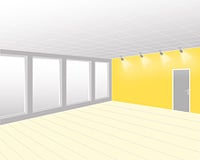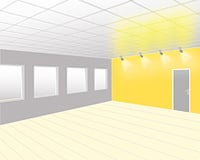Блеск и светорассеивание
Блеск
Another way to describe a surface is to measure "gloss". This value is always related to a certain angle (e.g. 20°, 60° or 85°) and does not describe how evenly the reflected light is distributed in space. The gloss value is between 0 and 100, where <10 is low gloss, 10-70 is semi gloss and >70 is high gloss, according to most of the relevant standards, i.e. ISO 2813, ASTM D 523 and DIN 67530.
Светорассеивание
Light diffusion (how light is spread) can significantly decrease dazzle and glare from the different surfaces and objects in a room. The more diffusely and evenly the light is spread the better dazzle and glare are prevented. Light diffusion can be defined as the ratio of the diffused reflected light to the totally reflected light. According to DIN 5036 measurements, ceiling tiles in light colours provide over 99% light diffusion, which means that practically all reflected light can be regarded as diffuse.
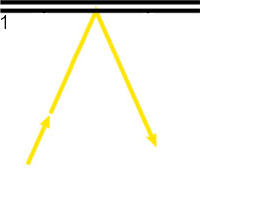 |
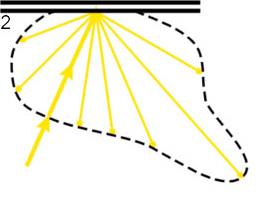 |
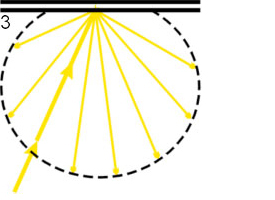 |
||
| 1. Reflection from a bright polished metal surface or a mirror, with no diffusion. | 2. Reflection from a surface with medium light diffusion causes glare at certain angles. | 3. A highly diffused reflection prevents glare and dazzle. |
Коэффициент светоотражения
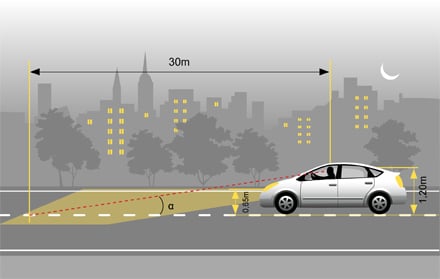 Commonly used descriptors (light reflection and light diffusion) does not explain the total experience of a ceiling surface. The retro reflection coefficient helps to complete the picture. This factor comes from a method developed to measure the painted lines on roads; how much light that is reflected back to the driver when driving on a dark road with the lights on. This is described in the standard EN 1436.
Commonly used descriptors (light reflection and light diffusion) does not explain the total experience of a ceiling surface. The retro reflection coefficient helps to complete the picture. This factor comes from a method developed to measure the painted lines on roads; how much light that is reflected back to the driver when driving on a dark road with the lights on. This is described in the standard EN 1436.
The picture above to the right describes the set-up. If we turn this setup upside down (see picture below), we can use the same standard to describe the light phenomena in a ceiling surface, something we could see but have not been measured and determined before. The unit of the retro reflection coefficient is mcd*m-2lx-1. Measured values on this type of painted surfaces ranges from 0 to 120 where low means below 50, high above 70 and an optimum value is around 60.
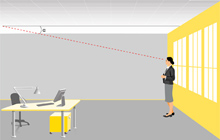 |
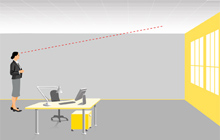 |
|
|
Light from behind you |
Light from in front of you |
|
Коэффициент светоотражение - adapted to ceiling surfacesThe left illustration above shows how the method to determine the retro reflection coefficient is adapted to a ceiling in a room, where the light meets the ceiling at low angles. The two illustrations above show how the observer is placed in relation to the incoming light and when she is looking at the ceiling surface. If the surface has a low retro reflection coefficient (<60) it will appear darker in the left illustration than in the right, where the reflected light will appear as glare. If the surface has a high retro reflection coefficient (>60) the surface in the left illustration will appear very light, but when looking at it from the other angle (right) it will appear dark. In both situations, with high and low retro reflection coefficient, there will be a big difference in how the surface appears when moving around in the room. BUT if the surface has an optimum retro reflection coefficient (around 60) it will balance how much of the light that is reflected back and how much that is going through - it will have the same appearance in both illustrations.
Optimum retroreflection coefficient Low retroreflection coefficient Another advantage with an optimal or high retro reflection coefficient is that it will not pick up colours from the outside or from walls; it has visual integrity. |
||

